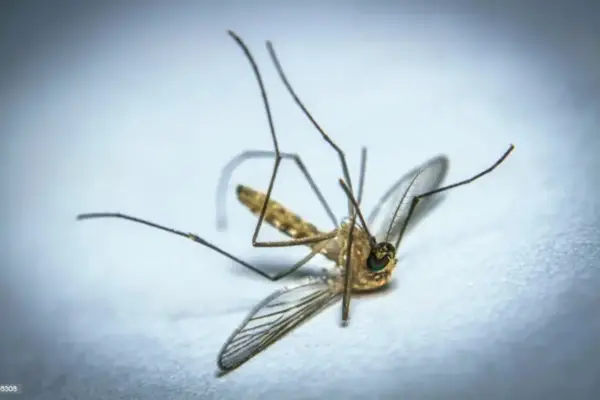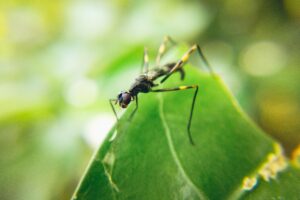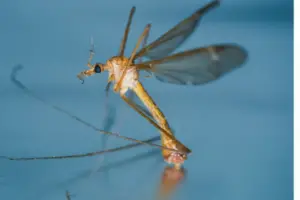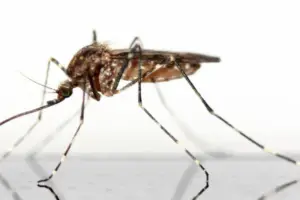“How far do mosquitoes travel?” This is a question I often get asked, but there’s no single answer. Mosquitoes’ flying distances vary greatly from one mosquito to another, except for those occasionally carried long distances by cyclonic winds or transported in vehicles.
Scientists employ various methods to determine their flying ranges.
In my recent research publication, I found that Australia’s saltmarsh mosquito (Aedes vigilax) can fly many kilometers from urban estuarine wetlands.
Understanding their flying capabilities is crucial for managing mosquito-borne diseases and developing effective control programs.
At MosquitoVibe, our experts have compiled a helpful guide to answer common questions about mosquito travel. We are dedicated to safeguarding your outdoor lifestyle.
Use this guide to assess the risks to you and your family, and feel free to contact us for a complimentary estimate on mosquito control for your home or business.
How Far Do Mosquitoes Travel?
The Zika-carrying Aedes aegypti and Aedes albopictus mosquitoes usually only fly a short distance, a few hundred feet, from where they breed. However, many other mosquitoes can fly as far as 1–3 miles.
Related Post: Itchy Bumps On Skin Like Mosquito Bites But Aren’t
In the Midwestern United States, some of the bigger mosquitoes have been seen at distances of 7 miles or even more from their breeding sites. If the Aedes aegypti and Albopictus can’t fly very far, then why do they have such a large range?
Most mosquito species, though, typically travel up to 3 miles from their breeding areas. For instance, the larger species mainly found in the Midwest have been observed as far as 7 miles from their breeding spots.
Mosquitoes Hitching Rides
Mosquitoes are not just skilled at flying long distances to find a blood meal; those carrying diseases have an additional trick up their sleeves—they hitch rides.
Instead of flying, these disease-carrying mosquitoes cleverly perch on suitcases or overseas shipments, using them as vehicles to establish new breeding grounds in places that suit their survival
Related Post: No-See-Um Bites: Treatment And Prevention
The Issue with Aedes aegypti & Aedes albopictus
A big problem with Aedes mosquitoes is that they can travel easily. They can hitch rides in suitcases, airplanes, and boats.
Even in a small vessel with water, they can complete their entire lifecycle.
One of their survival tricks is that their eggs can dry out completely and still hatch several months later when they come in contact with water.
Furthermore, their larvae can enter a hibernation-like state, making them resilient.
mosquito species
These mosquito species are relatively new immigrants to the US, especially the albopictus species, and they are skilled at adapting to new climates.
1. Aedes aegypti
The yellow fever mosquito first came to the Southeastern US on slave ships from Africa. It prefers the climate in the Southern US.
This mosquito bites at dawn and dusk and is black with white harp-shaped scales. It tends to target the ankles of its human victims.
2. Aedes albopictus
The Asian Tiger mosquito was introduced to the US through shipments of old rubber tires from Japan to Texas in 1985 and ornamental bamboo to California in the early 2000s.
The mosquito earned its name due to its black and white striped body. Aedes albopictus is an aggressive daytime biter and often bites one victim multiple times.
Related Post: Chlorine For Mosquito Bites: What You Should Know
How to Control Mosquitoes?
To protect your pets and family from mosquito bites, you can take steps to control mosquitoes on your property.
Both Aedes aegypti and albopictus require standing water to breed, so living near a pond or slow-flowing stream might attract more mosquitoes.
However, you can fight back by following these measures to keep your home mosquito-free:
- Remove standing water from areas like tarpaulin creases, pool covers, kids’ toys, dog dishes, bird baths, and gutters.
- Install a filter in still ponds and water features to keep the water moving, which discourages mosquito breeding.
- Use mosquito-repelling plants such as marigolds or citronella to decorate your surroundings.
- During outdoor gatherings, set up fans to create a breeze that keeps mosquitoes away, as they can’t fly against the wind.
- Wear protective clothing and use EPA-registered repellents to safeguard yourself from mosquito bites.
- Consider using mosquito traps to lure mosquitoes away from you and your living areas.
FAQ – Mosquitoes Travel Or Fly
How High Do Mosquitoes Fly?
Mosquitoes that feed on humans generally fly at heights not exceeding 25 feet. However, certain species may fly higher, especially if they prefer to breed in taller structures or trees, or if they can find food sources at elevated positions, carried by the wind.
Which Mosquito Species Fly Far From Their Breeding Grounds?
Certain mosquito species can fly up to 3 miles from where they hatch. In some cases, they may even venture up to 7 miles or more. Remarkably, saltmarsh mosquitoes can travel up to 40 miles away from their birthplace by hitching rides on high altitude winds.
How Far Can Mosquitoes Travel?
The majority of mosquito species stay close to their breeding grounds. For example, species like Aedes aegypti and Aedes albopictus, known to carry Zika and other diseases, typically won’t travel more than a few hundred feet from their breeding spot.
However, most mosquitoes can fly up to 3 miles away from their breeding sites. Some larger species, commonly found in the Midwest, have been spotted flying up to 7 miles from their breeding spots.
How Fast Do Mosquitoes Fly?
On average, mosquitoes fly at a speed of 1.5 mph or lower. While not exceptionally fast, this speed allows them to effectively evade swatting attempts by human hands.





